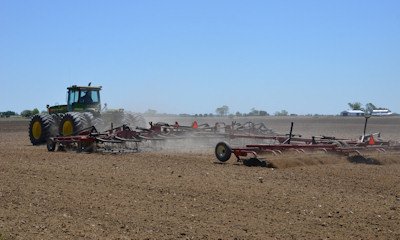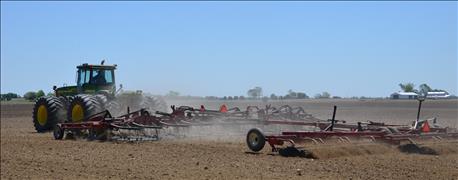March 12, 2016

The long-range forecasts from the National Oceanic and Atmospheric Administration continue to look much as they have during late winter and early spring. A generally mild winter could transition into a mild spring and favorable early planting season. There should be multiple days suitable for fieldwork if this forecast holds.

MORE DAYS FOR FIELDWORK? The long-term forecast would indicate that most Hoosiers should see more days to get in the field in early spring than they did a year ago.
Look for warmer than normal temperatures in April across the Hoosier state, notes Ken Scheeringa, interpreting the latest NOAA forecasts. He is the associate Indiana state climatologist. The northern part of Indiana will likely deviate more from normal than southern counties will deviate from normal, but the entire state should be somewhat warmer than normal compared to the 30-year average used to calculate normal temperatures for a given time of year.
Meanwhile, precipitation totals should be lower than normal statewide. Once again northern Indiana may be drier compared to normal than southern Indiana, but the entire state should trend on the dry side. However, more recent information indicates that the drier –than-normal trend may be less solid than the warmer than normal trend.

Remember that even if these overall trends prove true, you can get periods of totally different weather embedded within the trend. For example, February was mild for most people, but you might have had a hard time convincing people in northwest Indiana who received six or more inches of snow and were without electricity for more than a day during a late February storm. They might argue whether it was a mild winter or not.
Forecasts look at trends and averages, and are not forecasts meant to tell what weather will be like each and every day.
Long-term forecasts can also change when new information comes in. You may want to consult the National Oceanic and Atmosphere Administration website for updates during the spring. Long-term forecasts often don’t change much unless there is a major shift on one of the factors that controls global weather. The one under scrutiny right now is the El Nino/ La Nina cycle. At this time the El Nino event is still going on.
You May Also Like




